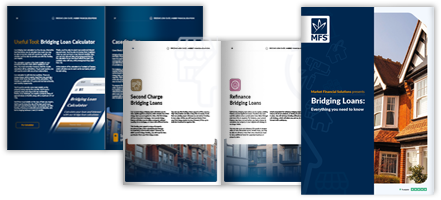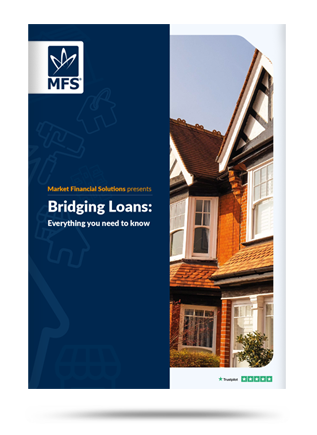
Written by Scott Lord
Deputy Chief Mortgage & Operations Officer – Front End
Market Financial Solutions are a bridging loan and buy-to-let mortgage provider and are not legal, financial, investment or tax advisers. This document is for informational purposes only and does not, and should not be considered, to constitute legal, financial, investment or tax advice or be relied upon by any person to make a legal, financial, investment or tax decision. Therefore, Investors are encouraged to seek appropriate professional advice. The information in this content is correct at time of writing.

Despite the slowdown that the UK property market has experienced, demand for bridging loans continues to be high. Brokers and direct clients alike regularly need to organise a financing option at speed. But they often do not know just how quickly a bridging loan can be issued. As such, this blog will provide some answers to the question, ‘how long does a bridging loan take?’.
But first, let’s define what a bridging loan is, and how they work.
What is a bridging loan and how does it work?
A bridging loan is a form of alternative finance. It provides property investors with fast and flexible capital for their residential and commercial investments. More specifically, these short-term loans help bridge the gap between payments.
For example, a borrower is caught in a property chain. The new property would be purchased using the bridging loan. The loan would be then repaid once the existing property is sold, or long-term financial solutions are secured.
What is the bridging loan process?
One of the big things that will impact the answer to ‘how long does a bridging loan take?’, is the process in which a bridging loan is issued.
The process will vary from lender to lender. However, here at Market Financial Solutions we follow these six simple steps:
- We receive your loan enquiry.
- Our underwriter issues the indicative terms. Those are subject to credit approval and receipt of information.
- We then issue the decision in principle (DIP), though subject to valuation, due diligence, and legal terms.
- Valuation is instructed, commitment fee received, and solicitors instructed.
- Legal paperwork issued and commitment fee refunded.
- The loan is drawn down and your funds issued.
How long does a bridging loan take?
The bridging loan timescale can vary. It depends on the complexity of the application and the lender’s requirements how quickly you can get a bridging loan. But also on the speed at which the borrower provides the necessary information and documentation.
Typically, unless the application faces significant delays, bridging loans can be approved and funded within a matter of days or weeks, rather than months.
However, once an enquiry has been received, borrowers can expect lenders to deliver an initial decision about an application within 24 hours. At Market Financial Solutions, we usually issue indicative terms within four hours. This should give borrowers an indication of how quickly a loan can be delivered.
What factors can slow down a bridging loan application process?
Getting the money after receiving an initial decision takes a little longer. There are some things which can delay an application.
- Type of bridging loan: Bridging loans regulated by the Financial Conduct Authority (FCA) will take longer to process. This is due to the extra checks that lenders are required to carry out. However, unregulated bridging loans can be issued in a shorter time frame. They commonly have a less strict criteria to follow.
- Surveying/valuations/legal checks: Lenders will often ask to survey a property before issuing a loan. Though, often, the lender has its own trusted panels of surveyors and valuers that can move quickly. Properties in a remote or difficult to access location could face further delay due to potential additional logistical challenges. Some lenders might forego this check though, if a loan is urgently required or if the borrower or broker has a good track record with the lender. There may be further delays if a lender needs to carry out some legal checks on a property’s titles and planning permissions. Especially if disputes could arise in the future.
- Borrowers’ financial history: Most lenders will carry out checks on the borrower’s financial history and credit score. They want to ensure that the borrower can be trusted to repay the loan. There may be a slight delay for those with more complex credit or financial histories, as lenders calculate the risk posed by the borrower. This is why borrowers should work with lenders that are already well-versed in complicated backgrounds, and more comfortable with those types of borrowers.
- Issues with exit strategy: Any issues with a borrower’s exit strategy could delay an application process.
- Inaccurate or incomplete documentation: There may be delays, if a broker or borrower is held up in sharing any necessary documentation with the lender, or if it’s inaccurate or incomplete. Therefore, it’s important that all documents are in order before an application is made.
- Market conditions/lender delays: An application could also be slowed down due to rapidly changing market conditions. In the wake of the mini-budget in 2022, for example, many lenders were forced to withdraw their products or stop lending temporarily. Similarly, if a lender has had a sharp influx in enquiries, they may not have the staff available to consider loans at speed.

What could speed up an application?
There are ways in which the bridging loan timescale can be sped up:
- Correct application/documentation: A good way of speeding up the loan process is to ensure that the application and accompanying documentation is complete and accurate.
- Exit strategy: A clearly defined exit strategy will definitely help to speed up the application. The lender will be able to see that the loan will be repaid in good time, even if the borrower’s credit score is less than ideal.
- Good communication: Similarly, borrowers and brokers who maintain a regular and open dialogue with their lender will ensure that any issues or questions can be sorted out quickly.
- Engage a good broker: Borrowers could consider engaging a professional and experienced broker to help with the loan application. Often, brokers will already have relationships with lenders that can help to speed the process up.
- Choose a good lender: This may seem like an obvious point. But choosing the right lender is vital. Indeed, working with a reputable lender with a good track record of processing bridging loans quickly can help to ensure that the application process is smooth and efficient.
By taking these steps, borrowers can help to ensure that their bridging loan application is processed quickly and efficiently, allowing them to access the funds they need without unnecessary delays.
How does the process look in the real world?
Market Financial Solutions recently received an enquiry from a property investor looking to expand their residential portfolio. Following an initial assessment, we determined the application sat within our criteria, and we got a decision in principle issued. The borrower needed to move quickly as the property in question had a lot of interest from other buyers. As such, we worked with the solicitors and valuers involved to complete the necessary due diligence asap.
Working internally, we gathered all the required paperwork to be reviewed. Once all the checks were made, the funds were delivered for drawdown. As the borrower had everything organised, along with a clear exit strategy in place, we were able to complete all the loan process within just 5 days. This allowed them to jump on the opportunity, and focus on their long-term financial plans.
Why choose Market Financial Solutions as a lender?
Market Financial Solutions is a well-established specialist lender, with almost 20 years of experience in providing quality bridging loans. We have highly experienced underwriting staff who are specialists in handling complex circumstances. This means, we can react quickly and efficiently to any potential issues.
To help borrowers in special or complex circumstances, we do not adhere to tick-box criteria. Instead, we take the applicant and the property into consideration, assessing everything by their own individual merits. That’s why we can provide finance for those with adverse credit, CCJs, complex company structures or undervalued properties.
It does not need to take long to get a bridging loan. Borrowers could see funds in their account in as little as three days. As we present all our charges upfront, you’ll be able to move forward confidently. There are no hidden fees. Find out more about Market Financial Solutions.
The Complete Guide to
Bridging Loans
Everything you need to know
- Different bridging types
- Useful tools
- Apply them in real life
- Market insights & more





